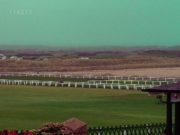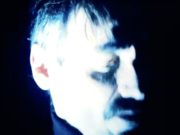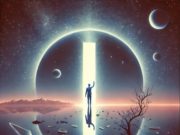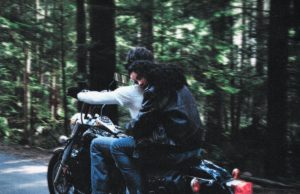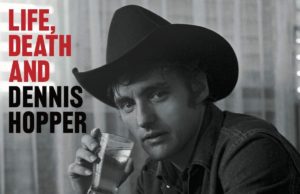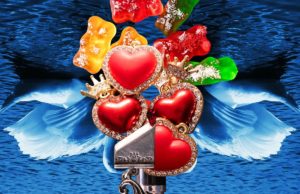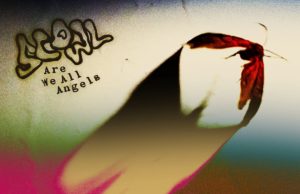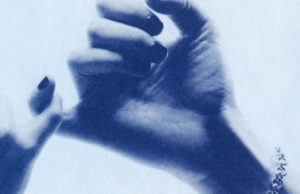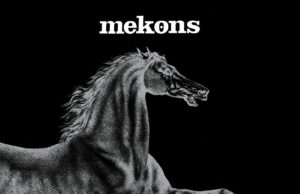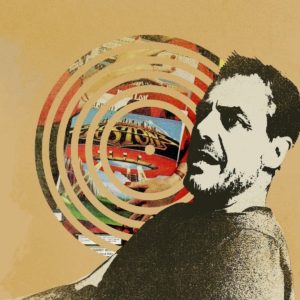 I wasn’t the only grown man gathered in the Mojo tent who was visibly emotional watching Peter Green perform Albatross at London’s Fleadh Festival on June 8, 2002.
I wasn’t the only grown man gathered in the Mojo tent who was visibly emotional watching Peter Green perform Albatross at London’s Fleadh Festival on June 8, 2002.
I still have the programme, and memories of seeing a handful of other late greats that day — Joe Strummer with his Mescaleros, and Shane MacGowan performing, whiskey in hand, with The Pogues. But Green is the person I went to see. He wasn’t a headliner, he wasn’t even on the main stage. All I remember from that show is Albatross — Green’s stunning instrumental which Fleetwood Mac released as a single in 1967. It went to No. 1. It wasn’t psychedelic. It wasn’t pop, and as I mentioned, didn’t have vocals. It was their first and only U.K. No. 1.
The only other No. 1 hit the band had didn’t come until a decade later with the Stevie Nicks-penned Dreams. By then, Green had been long gone from the lineup of the band he formed and was receiving electro-shock treatments for schizophrenia. When Fleetwood Mac became the biggest band in the world, thanks to the success of their self-titled 1975 album and 1977’s Rumours, Green spent many days in a semi-catatonic state due to his treatments and years of self-medicating with recreational drugs and alcohol. By 1979 he was well enough to reemerge, but was never consistently the same ever again. There were moments — like the performance of Albatross at Fleadh — but any of the Green albums I’ve bought or performances I’ve seen from the ’80s and ’90s are mostly lacking the tone and feel that led B.B. King to call him “the only guitarist who gave me cold sweats.”
Maybe part of it is the fact that Green sold his iconic 1959 Les Paul Standard — dubbed “Greeny” — to Gary Moore for £120 after he quit Fleetwood Mac in May 1970. After using it as his main instrument for 35 years, Moore sold it for around $1 million in an attempt to repair his personal financial woes. In 2014, Metallica‘s Kirk Hammett bought Greeny for slightly less than $500,000. He played it at a Green tribute concert in 2020. The guitar, which has its own Wikipedia page, had a faulty pickup when Green owned it. This was part of the secret sauce leading to its distinctive, atmospheric sound.
When I saw Green, he was playing a Stratocaster. He was also playing a Strat when he appeared as a solo artist performing Heavy Heart on Top Of The Pops on June 17, 1971. The track was from his 1970 jam session solo album The End Of The Game — his first after quitting Mac, and his last until 1979. He was still pretty together during this time, though he had no interest in being famous.
Green’s behaviour and state of mind noticeably began to shift around the time the band released his melancholy, beautiful single Man Of The World in April 1969. Green was always uncomfortable with fame — that’s why he named his band after the drummer and bass player. But now he was becoming increasingly uncomfortable with the amount of money he was getting paid. It was too much. He started wearing robes and a crucifix, and taking acid. Much has been written about a mysterious party he and guitarist Danny Kirwan attended in Munich where members of Amon Duul were jamming. The two men had heavy, life-altering acid trips. It wasn’t long afterwards that Green finally decided leading a famous band was more than he could bear.
His last Fleetwood Mac gig happened May 28, 1970 at The Roundhouse in London, a venue they’d just played a month earlier. In fact, the April 24, 1970 show is a pretty popular bootleg. A damn sight better than the second-last show Green played with the band — headlining a music festival in Bath called The Aquae Sulis Incident. Incident is right. There was plenty of buzz that Green’s time with Mac was nearly over — the band knew it and the fans knew it. So when the earlier bands went long — impacting Mac’s allotted time — there was resistance. The band didn’t want to stop, and the crowd didn’t want them too, either.
The festival was scheduled to end with a 10 p.m. performance by Fleetwood Mac, on the heels of sets by Chicken Shack, Juicy Lucy, Wishbone Ash and others. But the band didn’t hit the stage until just before midnight. They went through — by all accounts — an incredible version of Black Magic Woman, followed by World In Harmony from Then Play On, which was the album they were presently touring.
The festival was already over its midnight curfew as the band started into the spellbinding Underway, my favourite track from Then Play On. Staff pulled the plug, but drummer Mick Fleetwood refused to stop. Instead, he started into the distinctive drum part for the 1970 Jeremy Spencer solo song, If I Could Swim The Mountain. Fleetwood invited the departing audience to join them on stage, which many did. Festival staff then cut the lights. Unphased, audience members started lighting fires in the field and continued to dance to Fleetwood’s drumming. This continued for a while. Thank goodness that’s not how the Green era ended.
When it did, the remaining four-piece band pressed on with just Kirwan and Spencer handling guitar duties. They made the album Kiln House this way in June and July 1970, augmented to a five piece with keyboards and backing vocals from Christine McVie. She also did the artwork for Kiln House and was formally asked to join the band when recording wrapped — five days before the band left for a U.S. tour on July 26. Not much time for rehearsals. The band played 18 shows in the States between Aug. 1 and Sept. 5 — all of them before Kiln House was released on Sept. 18. At many of the shows, they were met with apprehension by fans who missed Green.
Following a run of U.K. dates that fall, a second tour of America started in February in support of Kiln House. Suddenly there were problems with frontman Spencer. The guitarist/vocalist wasn’t happy with his singing on some live recordings of the band, and he was struggling to get over a bad mescaline experience. On Feb. 9, the band’s first U.S. show was in Seattle. They had two shows in Vancouver before they were scheduled to fly to San Francisco for four headline gigs at the Fillmore West. But in the early morning on the first day of the tour, the San Fernando earthquake happened. Hundreds were injured and 60 people were killed. It freaked Spencer out in a big way. He pleaded with Fleetwood to cancel the California run of shows, but was denied. The two musicians shared a hotel room in Los Angeles where Mac arrived on the 15th for four gigs at the Whiskey A Go Go. That afternoon, Spencer told the drummer he was going out for a magazine — and never came back. Instead, he ran off and joined the Children Of God cult (aka The Family International) and remains affiliated with them to this day. It was several days before anyone could figure out where Spencer was or what happened to him. There were concerns he had been kidnapped, so the police were called — leading to the cancellation of the Whiskey shows.
Once it became evident that Spencer was safe, but insistent that he was never coming back, the band found themselves in desperate need of a guitarist. Having lost two in less than a year, they decided their best bet was to call the other departed one — Green. Presumably it was Fleetwood who had the job of making the call. They had six weeks left in the tour and needed his help so they wouldn’t have to cancel the remaining 16 U.S. shows.
Green agreed, but with strict restrictions. He was to be referred to as Peter Blue and had a long list of songs he refused to perform. Basically, the setlist for the remainder of the tour would feature Kiln House tracks Staton Man and Tell Me All The Things You Do, McVie’s Get Like You Used To Be from her previous band Chicken Shack, her cover of Etta James’ I’d Rather Go Blind, The Purple Dancer — which was the B-side to the 1971 single Firefly — a long, occasionally instrumental version of Black Magic Woman, and 90 minutes of jamming. Green arrived in California two days after he was called, allowing the band to play a show in San Bernardino on the 19th before heading to New York City to do two nights at the Fillmore East on Feb. 27 and 28.
Green’s last gig with the band as Peter Blue appears to have been on March 27 at the mob-owned Rock Pile (aka The Action House) in Island Park, Long Island. They added singer-guitarist Bob Welch to the band as Spencer’s replacement and recorded Future Games in the summer of 1971 — the first of five albums he’d feature on. In the fall through the spring of 1972, they recorded Bare Trees, after which guitarist Kirwan was fired while they toured in support of the record. Kirwan was replaced with two people — guitarist Bob Weston and former Savoy Brown vocalist Dave Walker. The pair appeared on the 1973 album Penguin — along with Green. The band founder appears uncredited, briefly at the end of the Welch-penned track Night Watch.
Green was in rough shape during this time and disappeared from the industry for six years. He started recording again in 1977, but it was a slow process. His second solo album In The Skies was released in May 1979. Five months later Green collaborated with Fleetwood Mac one final time. He plays guitar — uncredited again — on the Christine McVie track Brown Eyes.
He next appears under his birth name — Peter Greenbaum — on Fleetwood’s 1981 solo album The Visitor. The album, which was recorded entirely in Accra, Ghana, kicks off with an updated version of the Green-era Fleetwood Mac classic Rattlesnake Shake, featuring our hero on lead vocal and guitar. Green also adds guitar to the track Super Brains.
His final appearance on a stage with the band came when Fleetwood Mac was inducted into the Rock And Roll Hall Of Fame in 1998. He didn’t perform, but he did manage to stand with the band and reluctantly accept their and the crowd’s praise. Somehow, he was also convinced to join Santana — also being inducted that night — for a performance of Green’s Black Magic Woman. The track was first recorded by Fleetwood Mac as a single in 1968, but was made famous by Santana on their sophomore album Abraxas in late September 1970. Green couldn’t understand why Carlos Santana was so keen for him to play it exactly as he had 50 years earlier, and provided two lovely understated solos instead.
• • •
Area Resident is an Ottawa-based journalist, recording artist, music collector and re-seller. Hear (and buy) his music on Bandcamp, email him HERE, follow him on Instagram and check him out on Discogs.







